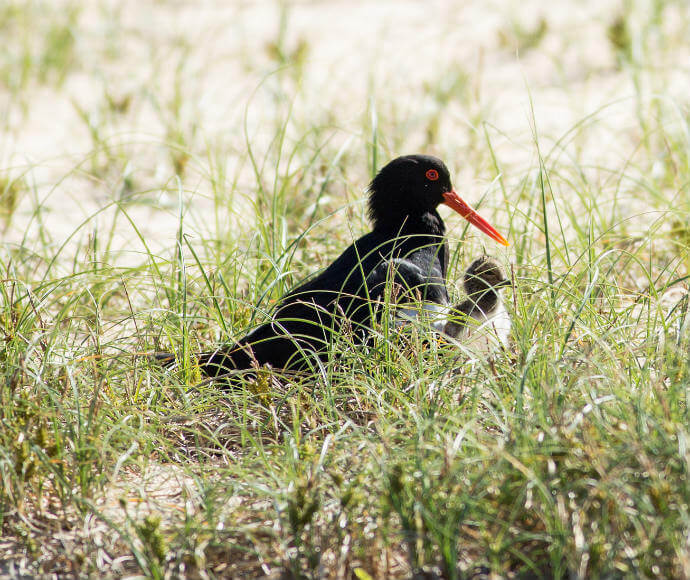The South Coast Shorebird Recovery Program, set up in 1999 by the NSW National Parks and Wildlife Service, aims to:
- reduce the rate of decline of threatened shorebirds and
- recover populations by making sure the birds breed in a safe environment.
This long-running program monitors and protects shorebird nesting habitat across all coastal environments from Wollongong to the NSW and Victoria border.
What's involved?
The program:
- conducts surveys to set up baseline data on the breeding activities and numbers of each threatened species in the region
- monitors suitable coastal habitats to determine the location of nesting sites and the level and types of threats posed at each site
- undertakes habitat protection and management actions such as erecting string fences around nest sites on busy beaches and signposting nest sites to promote their conservation and awareness among beachgoers
- manages the threat of nest sites drowning, and controls the presence of predators such as foxes and other birds and disturbance by dog walkers.
- conducts a broad-scale campaign each year to raise public awareness of the threatened shorebirds, their biology, conservation status, recovery efforts and the importance of protecting their habitat, through the media and active community involvement.
Which species could I see?
The beaches, estuaries, sand spits, rocky headlands and offshore islands of the south coast support a range of threatened resident and migratory shorebirds.
The South Coast Shorebird Recovery Program monitors and protects all 5 species of shorebird nesting in the region:
How can I take part?
The program has over 100 dedicated volunteers who play a vital role in helping with the monitoring and protection of numerous South Coast shorebird breeding sites. The endeavours of volunteers have been central to the protection of shorebird nesting colonies and have helped the program increase its coverage and the number of sites managed.
In return, shorebird volunteers learn a wide range of skills including bird identification, field work, construction and maintenance and effective communication.
Contact us
Narooma
Amy Harris
Phone: 02 4476 0834
Email: [email protected]
Ulladulla
Jodie Dunn
Phone: 02 4454 9516
Email: [email protected]
